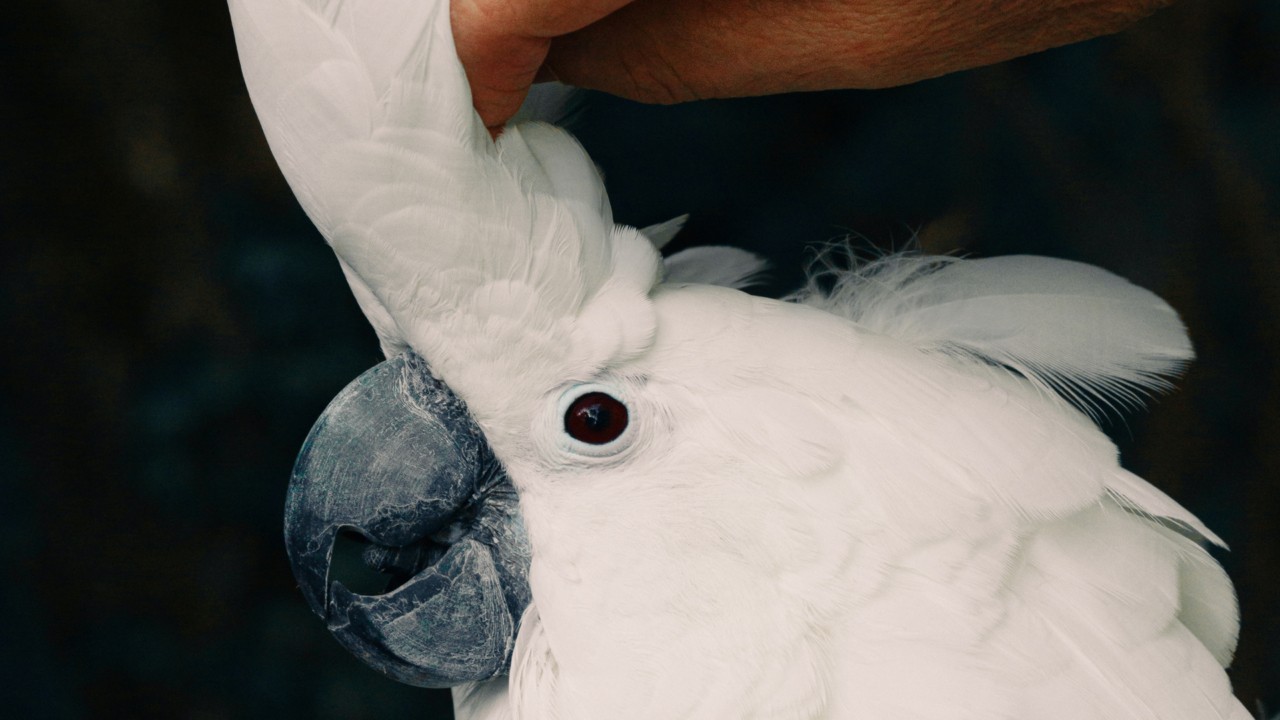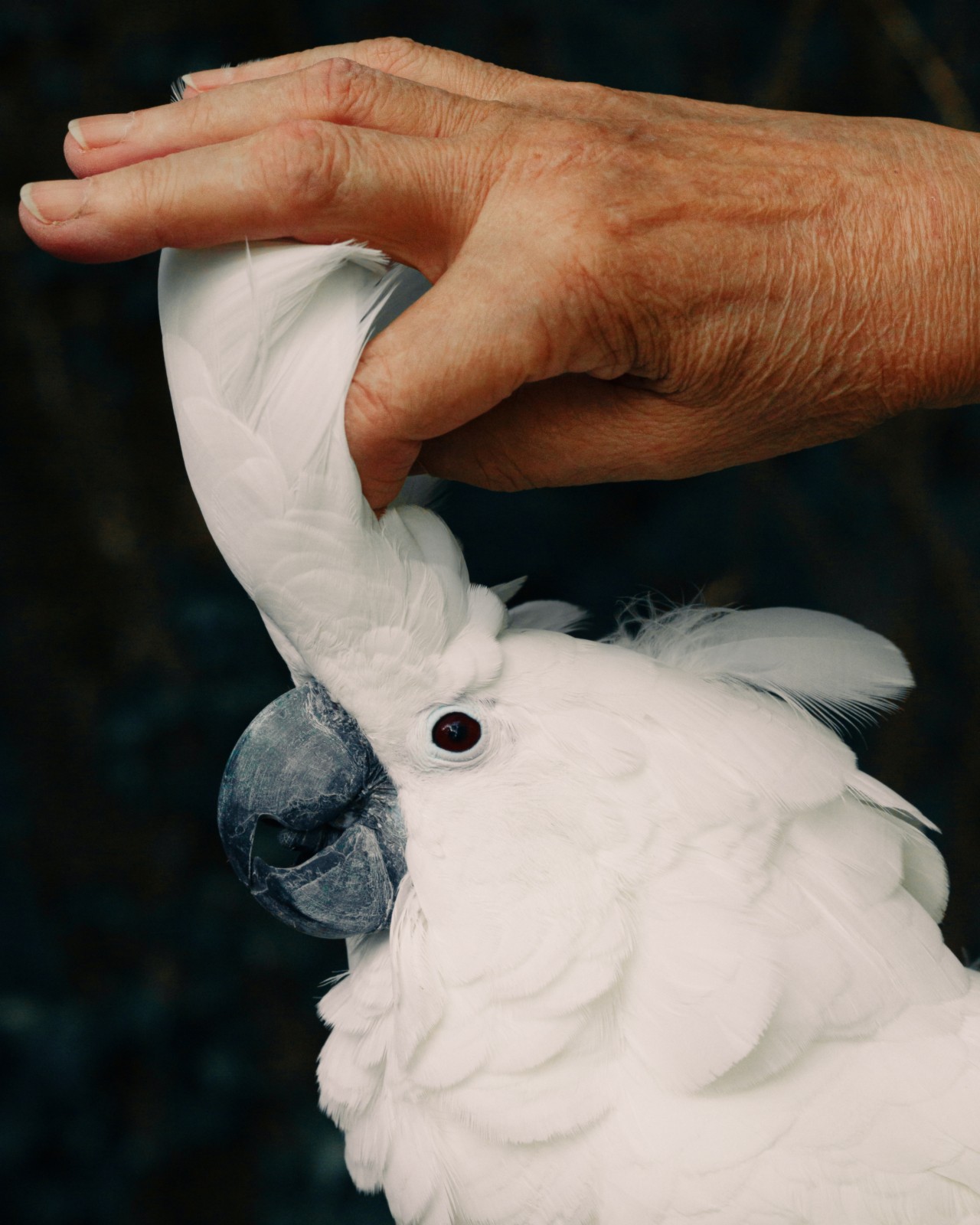

Photograph by Evelyn Dragan / Connected Archives
Words by Becca Warner
When a male jumping spider hops in front of a female during mating season, he performs a dramatic dance. Hairy forearms raised, he sidles rhythmically from side to side. But his dance also comes with a song—one our human ears can’t hear. He vibrates his abdomen and drums his legs against the ground to create complex rhythms that will convince the female to either mate with him, or eat him.
Katie Zacarian is gleeful as she describes these discoveries. Zacarian grew up with an entomologist father, and spent her weekends watching and feeding the carpenter ants that lived in huge glass farms set up in their house. Today, she works in tech—but her hope is that what she is helping to create will bring us all closer to the natural world.
Zacarian is the cofounder of Earth Species Project (ESP), a nonprofit that is using AI to translate animal communication into something humans can understand. The team works with scientific researchers studying the communication of spiders, whales, dolphins, crows, and others, with the goal of creating a tool that can decode their clicks, squawks, and songs.
The field of animal communication is in its infancy, but developments are moving fast. Scientists have already discovered that elephants call each other by unique names, and whale vocalizations have elements that are analogous to parts of human speech. We know that vervet monkeys have specific calls for leopards and eagles, and that bees can train each other to solve a puzzle too complicated for one bee to solve alone. The advent of AI could fast-track our understanding of these animals’ communications, and many others. But, as with most applications of AI, the possibilities it creates also raise urgent, head-scratching, and worrying ethical questions. In the wrong hands, or without sufficient forethought, humanity’s newfound understanding of animal communication could soon be put to problematic use.
Efforts are already underway to better understand this fast-evolving field of research. César Rodríguez-Garavito is a professor of clinical law and founding director of the More Than Human Rights (MOTH) Project at NYU School of Law, an initiative that brings together law, science, and the arts to advance rights for humans, non-humans, and the broader web of life. In partnership with Project CETI, a nonprofit organization with the mission to listen to and translate communication of sperm whales, Rodríguez-Garavito has embarked on the difficult task of defining and formalizing ethical guidelines for the development and use of technology that can help humans communicate with animals. The first stage has been an extensive literature review, looking at the published findings and frameworks from the last 50 years of animal rights and animal welfare work as well as from adjacent fields.
“The capacity for language would give a boost to the moral standing of animals in a way that suffering alone hasn’t.”
The dangers are many, and knotty. But Rodríguez-Garavito is keen to first explain the positive ethical and legal impacts of decoding animal communication. “I was initially attracted to this line of research and potential advocacy because of the opportunities,” he says. “For those of us who have done research and litigation on human rights, it’s frustrating to see that there’s such a categorical divide between the treatment that’s given to humans in ethics and the law, and the treatment that is afforded to animals and non-humans by mainstream legal rules. The reasons for not granting rights to animals are all inspired by a clearly anthropocentric view of the world.”
He explains that the criteria used to distinguish animals from humans in legal terms have to do with sentience, intelligence, consciousness—all of which have a tendency to “slip through your fingers, because they’re very fuzzy.” But understanding animals’ communications could help us see them as more like us, and therefore worthy of protection. “Cognitive ability has been used as a criterion to distinguish animals from humans,” he says. “The capacity for language would give a boost to the moral standing of animals in a way that suffering alone hasn’t.” In other words: if we can translate animals’ clicks, squawks, and roars into complex, meaningful messages, the legal system might finally recognize their right to safety and wellbeing.
Decoding animal communication could also provide a new and impactful kind of evidence in animal rights cases. Western science has already come some way in understanding animals’ experiences and expressions of pain. But decoding animals’ complex messages will reveal to scientists—and the courts—the subtler, but equally harmful, causes of suffering that animals are systematically subjected to. Whales, for example, could tell us that sound pollution in the ocean is blocking them from hearing messages from other members of their pod, and share why this is harmful to them. As Rodríguez-Garavito points out, “there is suffering, but we don’t know how much or what exactly is making them suffer. This is where having hard evidence from animal communication would be a reinforcing argument.”
More broadly, understanding the inner worlds of other beings could change our relationship to them. For Zacarian, ESP’s work has a grander mission: “to reconnect humans with what many of us have lost—our ability to listen and understand our co-species on Earth.”
“Imagine any story you’ve ever heard about Earth’s non-human species. In all of these stories, the animal is the object or the subject, but never the narrator or the reporter.”
If we listen to, and really hear, what animals have to say, we could discover entirely new ways of seeing the world. “Imagine any story you’ve ever heard about Earth’s non-human species,” Zacarian says. “It could be about deforestation or trafficking or the effects of climate change. In all of these stories, the animal is the object or the subject, but never the narrator or the reporter. This could quickly change with animals as the field journalist; as the historian”.
The potential positive impact of this technology is nothing short of profound. But crossing new boundaries of understanding is as risky as it is exciting—and without the right parameters in place, these technologies could also unlock a darker, more exploitative relationship with our fellow species.
An immediate set of concerns relate to the process of research itself, and the issue of autonomy.
“Are animals giving their consent to being recorded?” Rodríguez-Garavito asks. “Is this recording itself a harmful activity?” There is also cause for concern during the “playback” stage of research. Once researchers think they have decoded an animal’s message, they need to check that the sound means what they think it does. This involves playing the sound back to the animal, and observing their response. If the researcher has got it wrong—for instance, they play back the sound for “danger,” thinking it means “hello”—they could disorient or distress the animal in ways that are impossible to predict. Plus, Rodríguez-Garavito adds, “what if there’s a cultural and individual shock stemming from the fact that this is a completely disembodied message? It’s coming from nowhere.”
A second set of concerns centers on the eventual use of this technology. Once we have confirmed we understand animals’ messages, and can even communicate back to them, humans will have a new tool for influencing or controlling them. “[This means that] folks who are desperate for bees to return to certain places could lure them to those places as opposed to others,” says Rodríguez-Garavito. Particularly where there’s money to be made, huge risk follows. “Ecotourism operators would love to know how to lure whales to the boats,” he adds—and doing so could disorientate or disturb them. Hunters, too, could put the technology to dangerous use.
“The technology circle, like Silicon Valley, is mostly about ‘can do,’” Rodríguez-Garavito says. “[It’s about] the idea that if you can do it, you have to do it. The angle that we’re adding [to this conversation] is the ‘should.’ Even if you can do it, should you?”
“The technology circle, like Silicon Valley, is mostly about ‘can do.’ The angle that we’re adding is the ‘should.’ Even if you can do it, should you?”
The team behind ESP is keenly aware of the ethical implications of its work. To help foresee and prevent any negative impacts, the team includes scientific experts, like behavioral ecologists and cognitive neuroscientists. Once the technology is advanced enough to use, the question becomes much bigger: “How do we be careful about the ways this technology [could be] utilized by those outside of our organization or our value system?” Zacarian asks. Decisions on licensing will be crucial as one of the most powerful tools to determine who can have access to and use the technology.
“The harder thing,” Zacarian says, “is how do we, as an interdisciplinary field that come from different domains, like AI, ethics, animal welfare, philosophy, [and] behavioral ecology, work together to create a set of principles or regulations about how this technology can be used? We want there to be ethical guardrails and governance.” Thankfully, Rodríguez-Garavito’s efforts to develop this kind of ethical framework are well underway. Soon, he and his team at MOTH will set out draft guidelines that will be workshopped by an interdisciplinary group of ethics specialists, and later reviewed by a range of experts, including Indigenous leaders, anthropologists, and biologists.
The next step will be to get technology companies to voluntarily adopt the guidelines, which can also be described as soft law. “The law tends to evolve from soft law to hard law,” says Rodríguez-Garavito. Once scientific and technological organizations have subscribed to the guidelines, they can “incrementally, but hopefully not too slowly, percolate up to the level of real legislation and regulation.”
But ESP’s work is in many ways not a new frontier, which Zacarian is keen to point out. “There’s a long history of human beings observing and being in communication with animals, especially Indigenous people who hold so much of this wisdom,” she says. “We’re standing on the shoulders of so many elders in this space.”
It is clear that AI could catapult this long-held understanding into new territories—and fundamentally change our relationship to the Earth as we know it. But in its speed, and the drama of technological breakthrough, there is much that new developments should take care not to leave behind: respect for more than human beings, and a sense of kinship with them.
Done right, AI could help us dissolve boundaries and reconnect humans with the natural world. But it is only with firm guardrails, followed diligently, that we can be sure that this technology will take us down a path that elevates nature rather than harms it. Perhaps its greatest potential lies in its power to change how we humans think about our place in the world—to move beyond the anthropocentrism that has come to define our worldview. Understanding animals could, as Zacarian says, “completely upend the notion of ourselves as the center of the proverbial universe.”
AI Could Help Us Talk to Animals—but Should It?